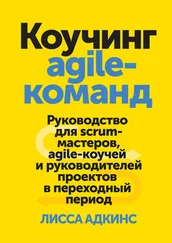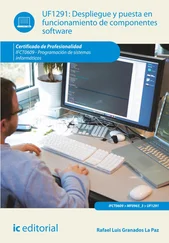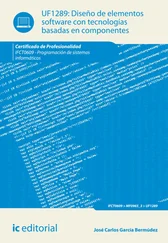The work products of the team should be measured for sufficiency with respect to communicating with the target group. It does not matter if the models are incomplete, drawn with incorrect syntax, and actually not like the real world if they communicate sufficiently to the recipients.
As Jim Sawyer so colorfully wrote in an e-mail discussion about use cases (Cockburn 2001): "... as long as the templates don't feel so formal that you get lost in a recursive descent that worm-holes its way into design space. If that starts to occur, I say strip the little buggers naked and start telling stories and scrawling on napkins."
The effect of the communication is more important than the form of the communication.
Some successful project teams have built more and fancier models than some unsuccessful teams. From this, many people draw the conclusion that more modeling is better.
Some successful teams built fewer and sloppier models than some unsuccessful teams. From this, other people draw the conclusion that less modeling is better.
Neither is a valid conclusion. Modeling serves as part of the team communication. There can be both too much and too little modeling. Scrawling on napkins is sufficient at times; much more detail is needed at other times.
The Cooperative Game Principle
Software development is a (resource-limited) cooperative game of invention and communication. The primary goal of the game is to deliver useful, working software. The secondary goal, the residue of the game, is to set up for the next game. The next game may be to alter or replace the system or to create a neighboring system.
Programmers as Communications Specialists
Saying that "software development is a cooperative game of invention and communication" suddenly shines a very different light on the people in our field.
Programmers are typically stereotyped as non-communicative individuals who like to sit in darkened rooms alone with their computer screens.
It is not a true stereotype, though. Programmers just like to communicate about things they like to communicate about, usually the programs they are involved in. Programmers enjoy trading notes about XML-RPC or the difficulties in mapping object-oriented designs to relational databases. They just don't like joining in the chitchat about what this year's football teams are doing.
There has been a surprisingly high acceptance of programming in pairs, a technique in which two people sit together and co-write their program (Beck 1999). I say "surprising" because many programmers first predict that they won't be able to work that way and then find they actually prefer it, after trying it for a week or two (Cockburn, 2000).
Understanding how much modeling to do, and when, is the subject of this book. Thinking of software development as a cooperative game that has primary and secondary goals helps you develop insight about how elaborate a model to build or whether to build a model at all.
As far as the stereotype is true, it accents the "invention" portion of the cooperative game. Programming has, up until recently, been more focused as a game of invention than as a game of communication. The interest of programmers to discuss programming matters with each other gets in the way of them discussing business matters with sponsors, users, and business experts.
Backing this up, we can attribute part of the cause for this to our educational curricula. Imagine some people thumbing through the university's curriculum guide. They see two tracks: One calls for a lot of reading, writing, and speaking, and some programming. The other calls for less reading, writing, and speaking and more of working alone, building artifacts. We can easily imagine the verbally oriented people selecting the first curriculum and the less verbally oriented people selecting the second.
Historically, success in our profession came from being able to sit alone for long hours without talking to anyone, staring at papers or screens. Those who didn't like that mode of work simply left the field. Newer, and particularly the "agile" methodologies, emphasize communication more. Suddenly the people who elected to join a profession that did not require much interpersonal communication are being asked to become good at it.
Only the universities can reverse the general characteristics, by creating software-development curricula that contain more communication-intensive courses.
A Second Look at the Cooperative Game
At the University of Aalborg, in Denmark, a new Informatics major was defined that involves both software design and communication skill (Mathiassen 2000). The department head, Lars Mathiassen, reports that the difference in people's personalities is noticeable: The new curriculum attracts those who are willing to accept the communications load, and the old curriculum attracts those who have less interest in communication.
To the extent that software development really is a game of invention and communication, we will have to see a greater emphasis on communication in the university curricula.
Gaming Faster
We should not expect orders of magnitude improvement in program production.
As much as programming languages may improve, programming will still be limited by our ability to think through the problem and the solution, working through the details of how the described solution deals with the myriad cases it will encounter. This is Naur’s "programming as theory building" (Appendix B).
To understand why exponential productivity growth is not an appropriate expectation, we need only look at two other fields of thought expression: writing novels and writing laws. Imagine being worried that lawyers are not getting exponentially faster at creating contracts and laws!
In other words, we can expect the game of invention and the business of communicating those intentions to a computer to remain difficult.
Markers and Props
Intermediate work products help with Naur's "theory building" and Ehn's "language games," as reminders for our reflection. They provide shared experiences to refer to or serve as support structures for new ideas.
The former need only be complete enough to remind a person of an earlier thought or decision. Different markers are appropriate for different people with different backgrounds.
The latter act as props to incite new thoughts. Laser Printer Mockups
Ehn's team considered introducing laser printers to a group that had no experience with them, back in 1982. They constructed cardboard mockups, not to remind the participants of what they already knew, but to allow them to invent themselves into the future, by creating an inexpensive and temporary future reality to visualize.
These mockups are not second-class items, used only due to some accidental absence of technology. Rather, they are a fundamental technique used to help people construct thoughts about new situations. Any work product that helps the group invent a way forward in the game is appropriate. Whether they keep the mockup around as a reminder of the discussion is up to them in the playing of their game.
Diminishing Returns
Because the typical software development project is limited in time, people, and money, spending extra of those resources to make an intermediate work product better than it needs to be for its purpose is wasteful. One colleague expressed it this way: Diminishing Returns
It is clear to me as I start creating use cases, object models, and the like, that the work is doing some good. But at some point, it stops being useful and starts being both drudgery and a waste of effort. I can't detect when that point is crossed, and I have never heard it discussed. It is frustrating, because it turns a useful activity into a wasteful activity.
The purpose of each activity is to move the game forward. Work products of every sort are sufficiently good as soon as they permit the next move.
Читать дальше










